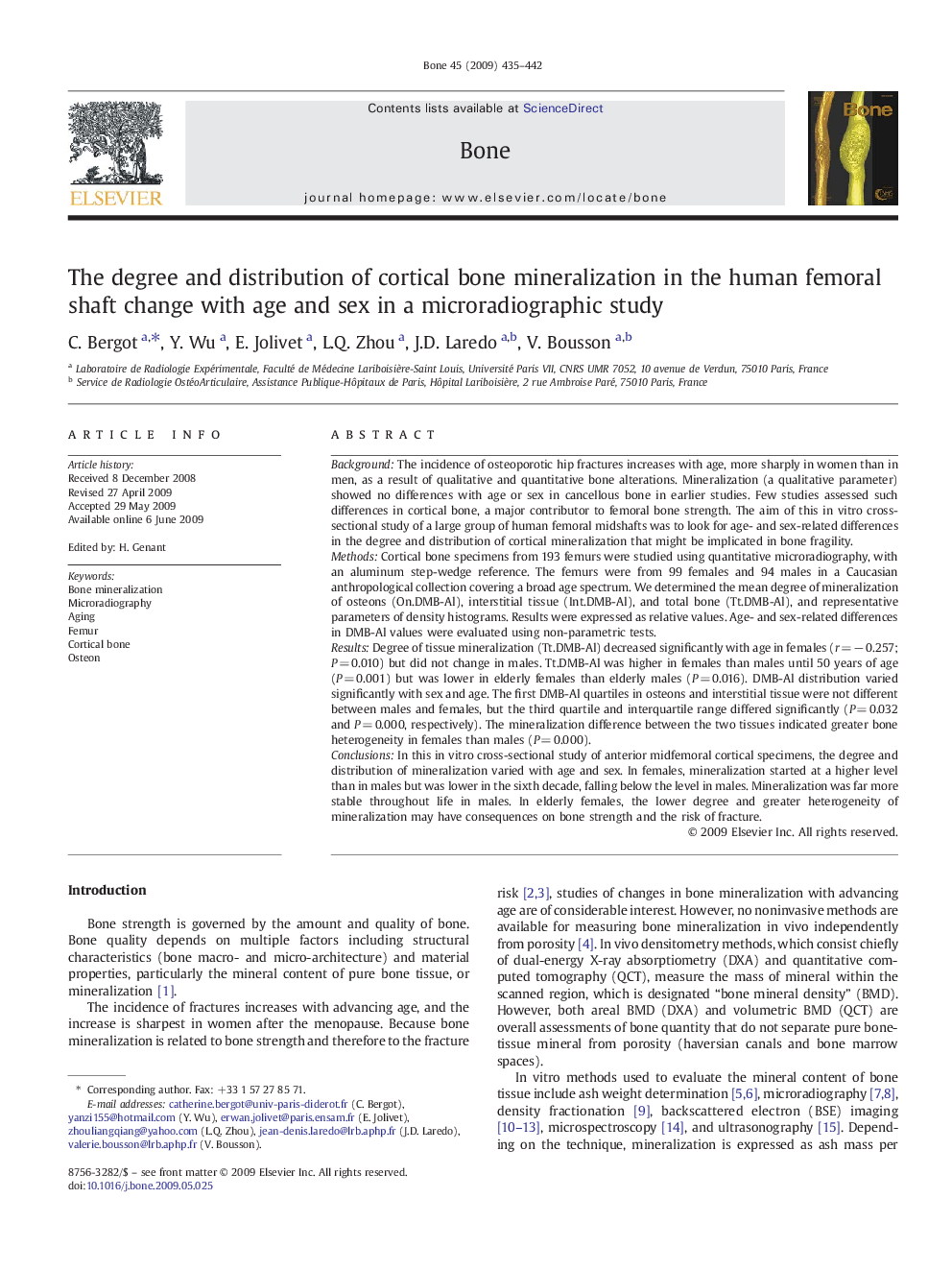| Article ID | Journal | Published Year | Pages | File Type |
|---|---|---|---|---|
| 2781402 | Bone | 2009 | 8 Pages |
BackgroundThe incidence of osteoporotic hip fractures increases with age, more sharply in women than in men, as a result of qualitative and quantitative bone alterations. Mineralization (a qualitative parameter) showed no differences with age or sex in cancellous bone in earlier studies. Few studies assessed such differences in cortical bone, a major contributor to femoral bone strength. The aim of this in vitro cross-sectional study of a large group of human femoral midshafts was to look for age- and sex-related differences in the degree and distribution of cortical mineralization that might be implicated in bone fragility.MethodsCortical bone specimens from 193 femurs were studied using quantitative microradiography, with an aluminum step-wedge reference. The femurs were from 99 females and 94 males in a Caucasian anthropological collection covering a broad age spectrum. We determined the mean degree of mineralization of osteons (On.DMB-Al), interstitial tissue (Int.DMB-Al), and total bone (Tt.DMB-Al), and representative parameters of density histograms. Results were expressed as relative values. Age- and sex-related differences in DMB-Al values were evaluated using non-parametric tests.ResultsDegree of tissue mineralization (Tt.DMB-Al) decreased significantly with age in females (r = − 0.257; P = 0.010) but did not change in males. Tt.DMB-Al was higher in females than males until 50 years of age (P = 0.001) but was lower in elderly females than elderly males (P = 0.016). DMB-Al distribution varied significantly with sex and age. The first DMB-Al quartiles in osteons and interstitial tissue were not different between males and females, but the third quartile and interquartile range differed significantly (P = 0.032 and P = 0.000, respectively). The mineralization difference between the two tissues indicated greater bone heterogeneity in females than males (P = 0.000).ConclusionsIn this in vitro cross-sectional study of anterior midfemoral cortical specimens, the degree and distribution of mineralization varied with age and sex. In females, mineralization started at a higher level than in males but was lower in the sixth decade, falling below the level in males. Mineralization was far more stable throughout life in males. In elderly females, the lower degree and greater heterogeneity of mineralization may have consequences on bone strength and the risk of fracture.
